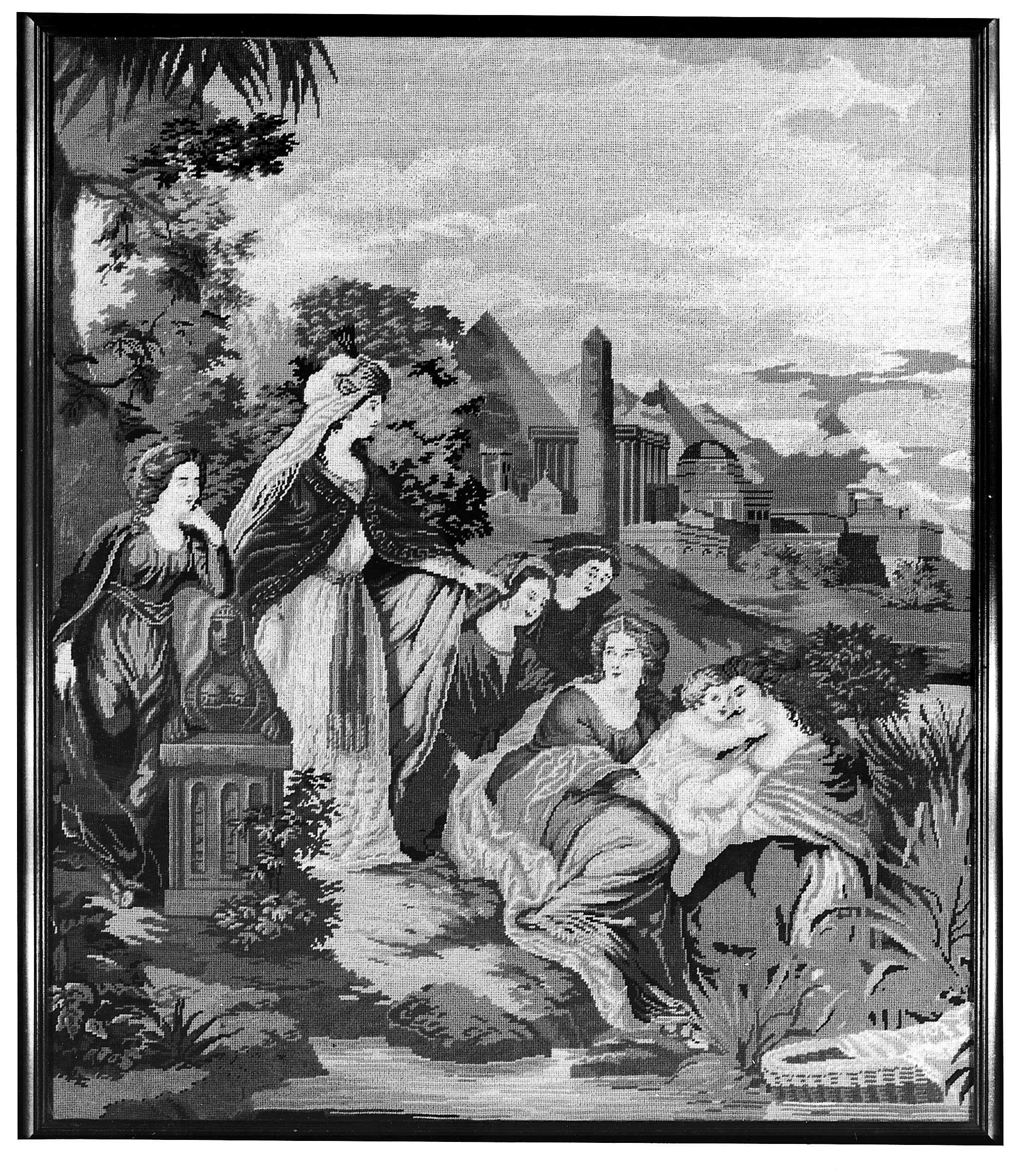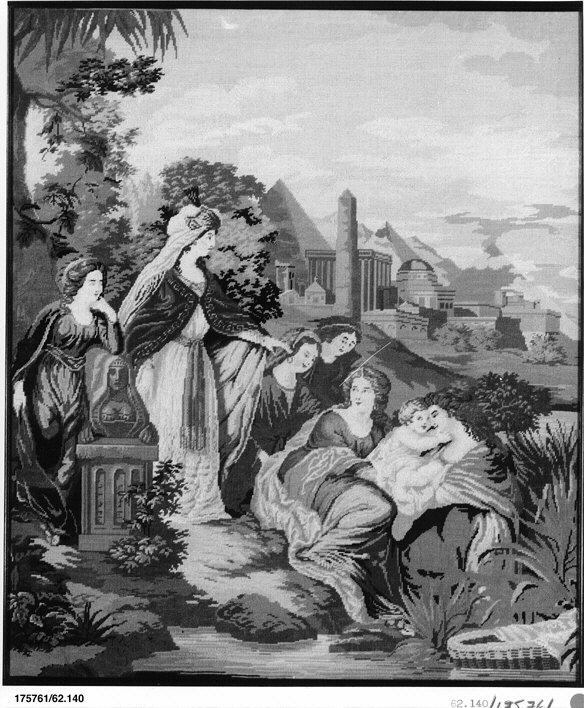Embroidered Picture
Mary Ann Parks Hammond American
Not on view
"Berlin work" pictures, such as this one, became a needlework craze during the mid-nineteenth century. Not truly schoolgirl embroidery, Berlin work took little skill and was practiced by leisured ladies of all ages. It was designed to be sewn using only one type of stitch, usually tent stitch or cross stitch, on canvas mesh. The commercially produced patterns were drawn in color on grided paper. After the pattern was purchased, it was copied onto the mesh, with each square in the grid equaling one stitch. The designs for Berlin work, which got its name from the German worsted wool used to stitch it, were often large elaborate scenes from history or the Bible. As a young woman's ability to make clothes and linens for her family became less and less important with the rise of mechanization, projects such as Berlin work pictures filled time, although they did not encourage creativity or teach advanced sewing skills.
Due to rights restrictions, this image cannot be enlarged, viewed at full screen, or downloaded.
This artwork is meant to be viewed from right to left. Scroll left to view more.




